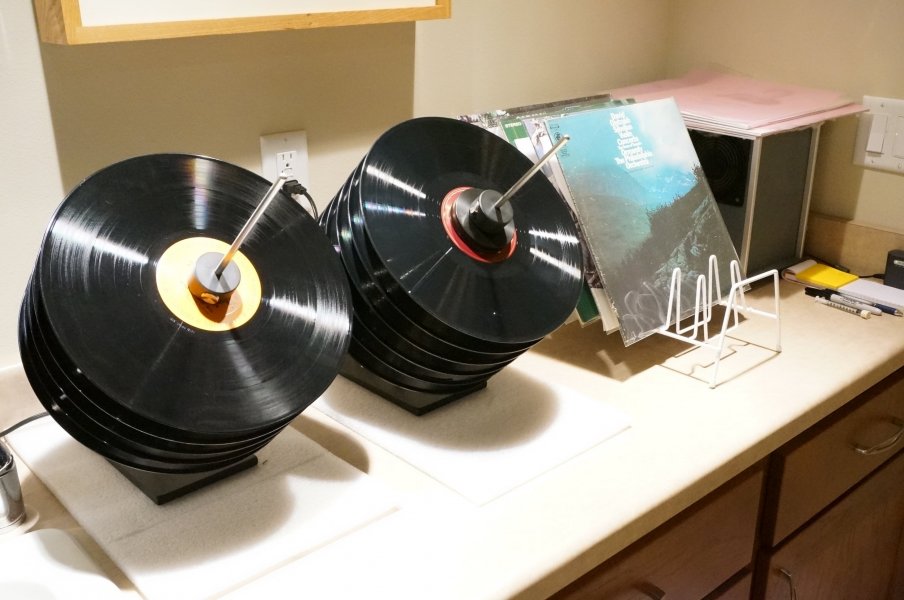I've checked what I have available locally from AudioRevita: 10L/240W and 15L/360W both 40kHz and both have 24W/L, same as our current one (6L/150W). I'm leaning towards 10L/240W as it is smaller, unless 15L/360W offers some leap forward.
From your experience, what would be the optimal usage of 6L/150W and 10L/240W? From what I understand the latter offers more cavitation power as the volume is bigger at the same wattage per liter (pls correct me Neil if I'm wrong). This would suggest:
10L/240W, 5 LP's, (or 15L/360W, 7LPs) for cleaning
6L/150W for rinsing
Comments welcome

Thanks
Jarek:
If you want to clean more than 2 records at time, the 10L/240W would be a good choice. At 10L to clean 5-records at once, you would need to slow the spinner down to only 1-rpm. I suspect that they are using a single design transducer and then increasing the number as the tank size increases, so they install three 60W for the 6L (180W), four 60W for the 10L (240W) and six for 15L (360W). Also, these power ratings can be wishful. If the transducers are not mounted optimally, some power is lost, and I am not familiar with whether power output is steady with electronics/transducer temperature.
FYI - For the 10L/240W unit, the UT transducers should only heat the water max 0.6F/min (assume ideal and most of the power is transferred to heat so the 10L = 22-lbm water, and the 240W = 13.7 BTU/min, heat capacity of water 1-BTU will increase 1-lbm water 1F, then 13.7-BTU/22-lbm = 0.6).
Using the 6L for rinse is OK if spinning too fast. You will loose cavitation intensity but you are mostly rinsing to remove any cleaner residue. Its a cost/performance compromise.
The one item you should consider is noise & reliability. These lower cost UT tanks as you probably know can be very noisy and contrary to the advertising are not designed for heavy use. If they were there would not be warnings to not use >30 min - does it have a temperature warning, some do. Units intended for continuous operation often have cooling fans and much more robust construction (with commensurate $$$).
Before any decision to buy a new UT, why not make the low cost changes first that can be used for any UT tank - so there is no money lost:
-Change the chemistry to as recommended.
-Install improved filter/pump
-Monitor TDS appropriately
-Clean just 1 record - how good is it, clean 2 records at a time - how good are they.
Then put together a list of objectives/requirements you want such as:
-What is the initial cleanliness of the record(s) you are cleaning. The Elmasonic P-series has two operating frequencies (35kHz & 80kHz) with variable power for each. Used effectively, it should be able to avoid vacuum-RCM (or similar manual wash) for all except the dirtiest of records.
-How many records to clean at-once. This will dictate the cleaning UT size - volume.
-How many records to clean during a single session. If you have to secure every 30-min for 30-60 min for the unit to cool, you may not be happy. This can make the decision to wait, and save-up for a better unit.
-Desired process time for combined clean & rinse. How easy is it to move a record from the cleaning UT to the rinsing UT.
-What is your access to DIW,. If you have lots, the rinse tank can be refreshed frequently. Will both the clean & rinse tank be filtered - if so, each needs its own filter/pump. You could use a 0.5 micron for the rinse tank and re-purpose your existing pump.
I have to echo what Tim (
@tima) has said a few times that if the process becomes cumbersome, then you will not use it as frequently as you should.
Good Luck,
Neil







